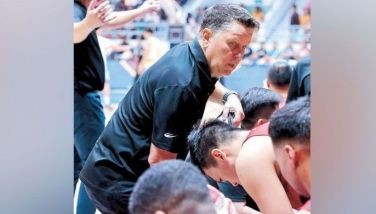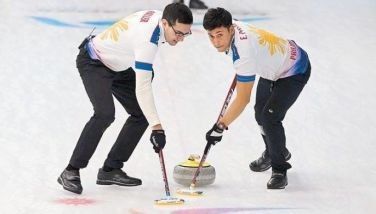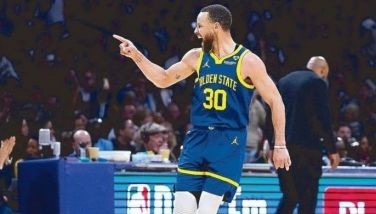Islanders: the original 'Azkals'
Long before the Philippines had a football team the country could rally around, there was a bunch of intrepid young men who were thrown together, then cast into the first of international competitions they weren’t really prepared for. But they acquitted themselves incredibly well in a team sport just discovered by an adoring public, and made a name for themselves and their country internationally.
In 1934, organizers of the 1936 Berlin Olympic Games held a meeting to discuss the rules for the new sport to be played as part of Adolph Hitler’s display of Aryan might. Though the rules were vastly different from the game we recognize today, this was basketball in its nascent form, and the Philippines was sending a team.
At the time, there were only two basketball courts in the territory now known as Metro Manila, the more popular one at the Manila YMCA, where a mall now stands. The sport of choice for the affluent was baseball, also introduced in schools by American educators. The less fortunate ran track. Though basketball was originally considered an effeminate sport by Filipinos, it was starting to catch on among young men who played it in the streets. In fact, Olympic team member Jacinto Ciria Cruz, known then as “Jumping Jack”, was so enamored of the sport that even when his father hid all his pants to keep him from leaving the house, he simply pulled down his sleeveless undershirt, and used a safety pin to hold its ends together between his legs so he could play.
A 26-year old lawyer named Ambrosio Padilla, two years retired from the game primarily for lack of competition and the need to pursue his career, was recalled to captain the team. In two interviews with this writer in 1987 and 1988, he recounted the first Philippine Olympic basketball team’s achievements in vivid detail more than 40 years later.
“At first, we really didn’t know each other that well,” admitted the former senator and Philippine Olympic Committee president in those conversations. “We had our differences in background and upbringing, but we were also excited to play in the Olympics.”
The first major hurdle our team faced was getting to the Olympics on time. Remember, there were no commercial flights in the days leading up to World War II. The players spent three weeks onboard a ship just to get to Paris. They endured seasickness, the lack of rice, boredom, loneliness and their primary piece of equipment – a basketball – falling into the ocean. There was still no television and for long stretches, not even radio broadcasts or even newspapers.
“But that was how we got to know one another,” Padilla explained. “There was nothing else to do except talk. And we were all dying to play.”
The ordeal wasn’t over. From Paris, the squad spent one more week crammed into tiny compartments on a train to Berlin. Needless to say, by the time they arrived at the Games, they were ready to run roughshod over anyone standing in their way.
There were many historical touchstones in Berlin. James Naismith, the father of the game of basketball, was there, his signature on the players’ ID badges. Adi Dassler was still hand-making shoes for German athletes in the infancy of his global brand, adidas. And of course, Hitler had hired the best filmmakers in the world to document what he thought would be his greatest triumph, though he would be embarrassed by the four gold medals won in record-breaking fashion by Jesse Owens.
Then something strange happened. In the days when the game was being played on dirt, had no shot clock, and where every basket resulted in a jumpball, this platoon of handsome, mysterious young men from a small archipelago started grabbing attention. German teen-agers swooned and handed them scented love letters begging for clandestine rendezvous. The wealthy were inviting them to parties. People were putting down their newspapers because our boys played a faster game. And they were nudging other events out of sports page headlines. They were christened “The Islanders” from the Philippine Islands. Though scores rarely surpassed the high teens in those days, the Filipinos’ games became events, complete with their own mobs of shrieking blonde or brunette fans who didn’t understand any language the player spoke.
“I think people were surprised by us, by how well we played,” Padilla remembered, recounting the scores of every game The Islanders played. “People wanted to meet us. It was a great experience.”
Sadly, the unblemished record would be tainted by two unfair decisions made on the spot by tournament organizers. First, the US, which did not attend the organizational meeting two years earlier, had twice as many players as allowed, including four over the 6’2” height limit. One of them was a 6’8” All-American named Joe Fortenberry, who was also allowed to play. With the numerous jumpball situations, this provided an unfair advantage for the Americans.
Secondly, the schedule as originally envisioned was too long. Desperate to find a way to shorten the tournament midstream, organizers decided that from that point onwards, each team that suffered a loss would be demoted to the consolation bracket, and would not be able to medal. As luck would have it, The Islanders’ next opponent was the US, whose size was overwhelming. It was a standard practice for to hold onto the ball for as long as possible once they had built any kind of lead.
Despite suffering just that loss, the Philippines was relegated to fifth place and watched as the United States thrashed Canada in a rain-soaked, muddy gold-medal game. Though they still faced the prospect of a month-long return journey home, The Islanders held their heads high. They not only proved they could beat the world at this new game, they also captured the hearts and imaginations of spectators from around the world.
- Latest
- Trending



























